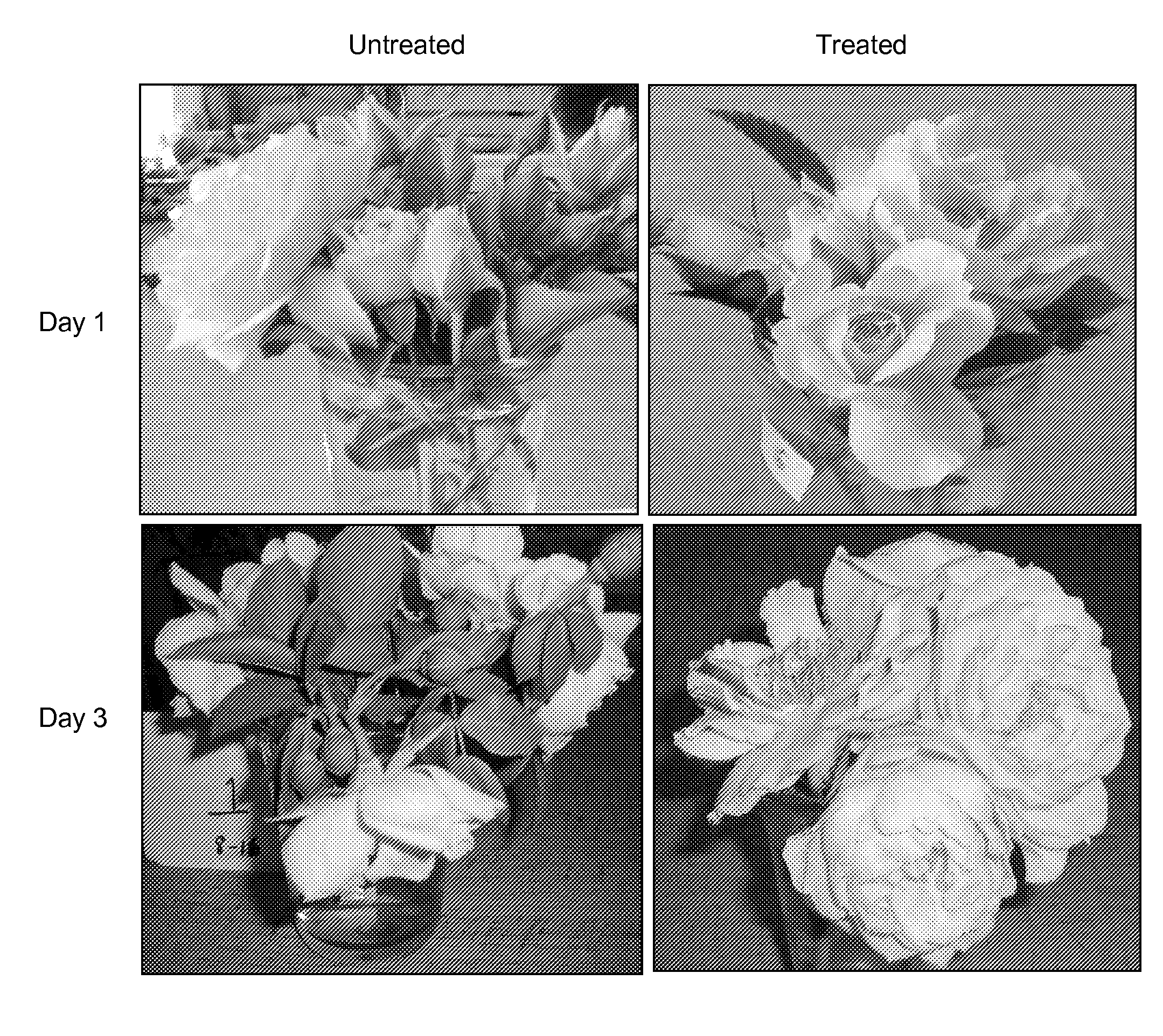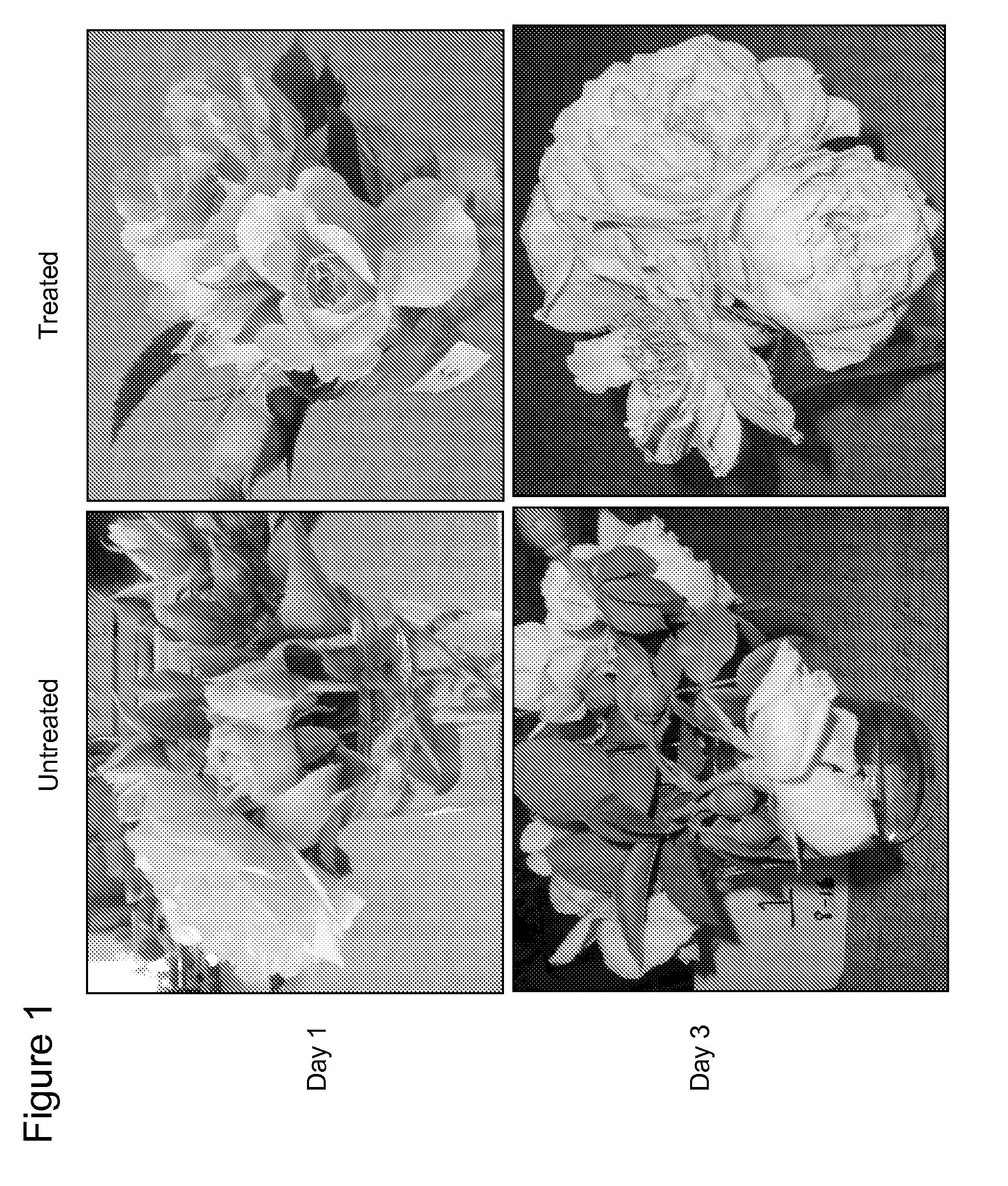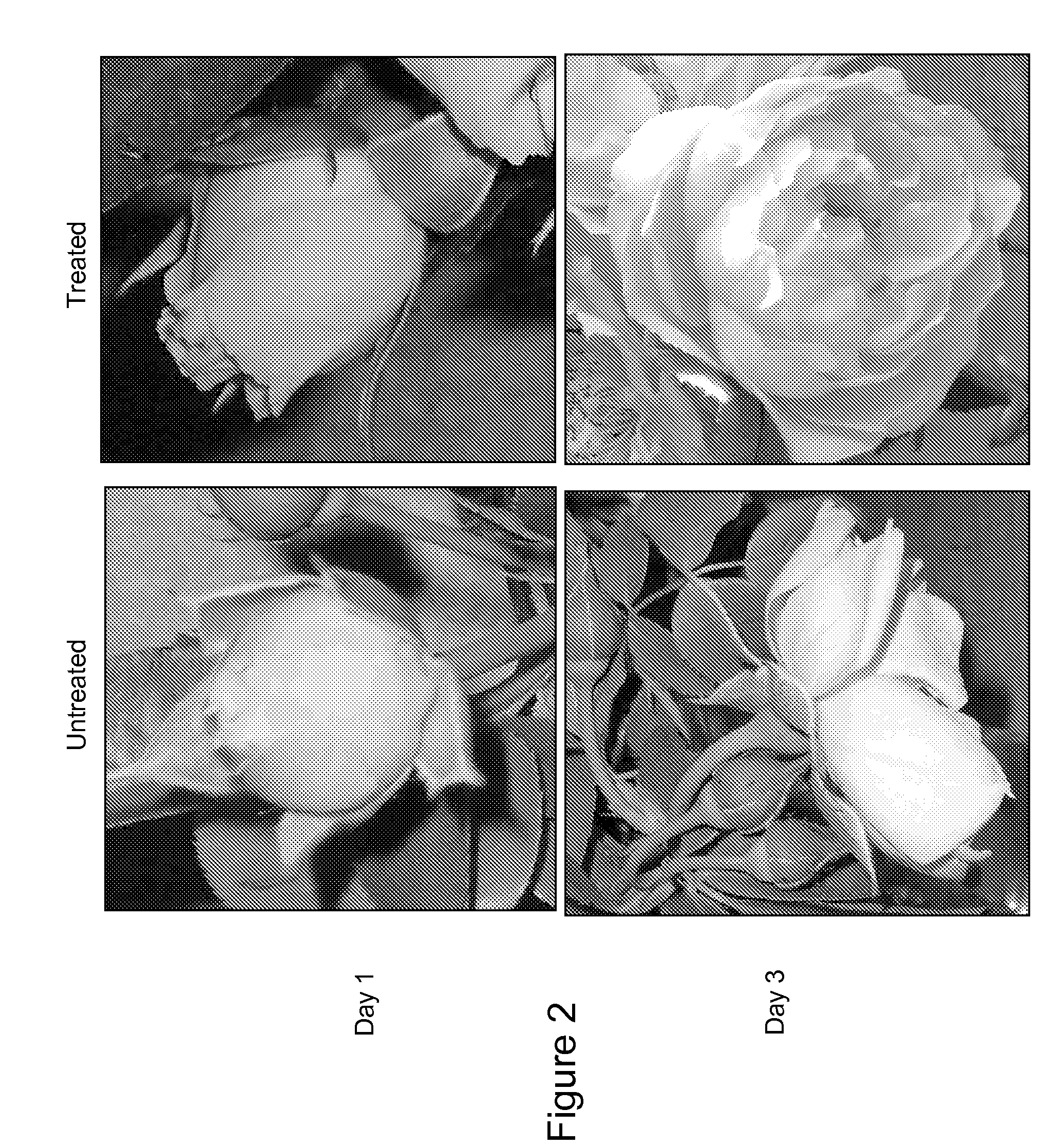Methods for Improving Flowering Characteristics Using Methyl Dihydrojasmonate
- Summary
- Abstract
- Description
- Claims
- Application Information
AI Technical Summary
Benefits of technology
Problems solved by technology
Method used
Image
Examples
example 1
Improved Vase Life of Field Grown Roses After Treatment with MDHJ
[0036]Foliage of field grown ‘Julia Child’ roses were sprayed to the point of drip 24 hours before harvesting with an aqueous solution comprising 5.0 mM MDHJ, 0.125% Triton® X-100, and 0.5% canola oil. On average, about 100 ml of the formulation was applied per plant, comprising an approximate volume of 130 μl (or 500 μM) MDHJ. Stems of flowers in the bud to early-bloom stage were cut in the field. Stems received a fresh cut while submerged under water before transferring to a water-filled vase. The bloom stage of 4-5 flowers was analyzed on day 1 and day 3, as compared with untreated roses that were otherwise similarly handled. The results are given in Table 2 below. FIG. 1 illustrates the full vases of flowers for the treated and untreated roses on day 1 and day 3, respectively. FIG. 2 illustrates individual roses on day 1 and day 3.
TABLE 2Stages of Blooming in Treated and Untreated Rose.Bloom StageTreatmentDay 1Day ...
example 2
Prolonged Development of Flowers on Intact Rose Plants
[0038]Parade Roses® with flowers in the bud to early bloom stage were treated to the point of drip on day 1 and day 2 with an aqueous solution comprising either (1) 0.125% Triton® X-100 and 0.5% canola oil as a control treatment; or (2) 1.5 mM MDHJ, 0.125% Triton® X-100, and 0.5% canola oil. There were four plants per treatment. Approximately 10 ml of each treatment was applied to each plant, comprising approximately 3.9 μL (15 μM MDHJ). Rate of flower development of individual flowers was monitored and compared between treatments. On day 1 and day 12, individual flowers were rated according to their stage of blooming. The results are given in Table 11 below. FIG. 3 is a photographic comparison of treated and untreated plants at day 1 and day 12.
TABLE 3Effect of MDHJ on Flower Development in Intact Flowering Plants.Bloom StageFlower NumberDay 1Day 12Treatment 1112212311423522613712Average1.32.1Treatment 2122211322411511622711811A...
PUM
 Login to View More
Login to View More Abstract
Description
Claims
Application Information
 Login to View More
Login to View More - R&D Engineer
- R&D Manager
- IP Professional
- Industry Leading Data Capabilities
- Powerful AI technology
- Patent DNA Extraction
Browse by: Latest US Patents, China's latest patents, Technical Efficacy Thesaurus, Application Domain, Technology Topic, Popular Technical Reports.
© 2024 PatSnap. All rights reserved.Legal|Privacy policy|Modern Slavery Act Transparency Statement|Sitemap|About US| Contact US: help@patsnap.com










